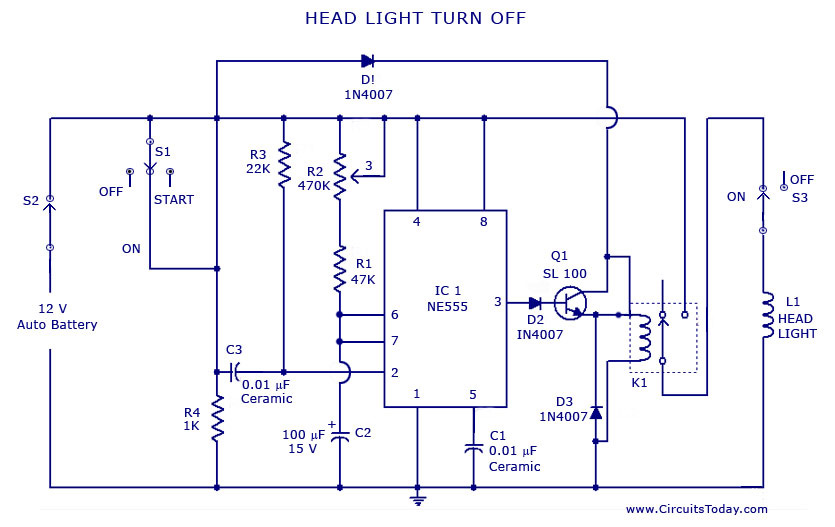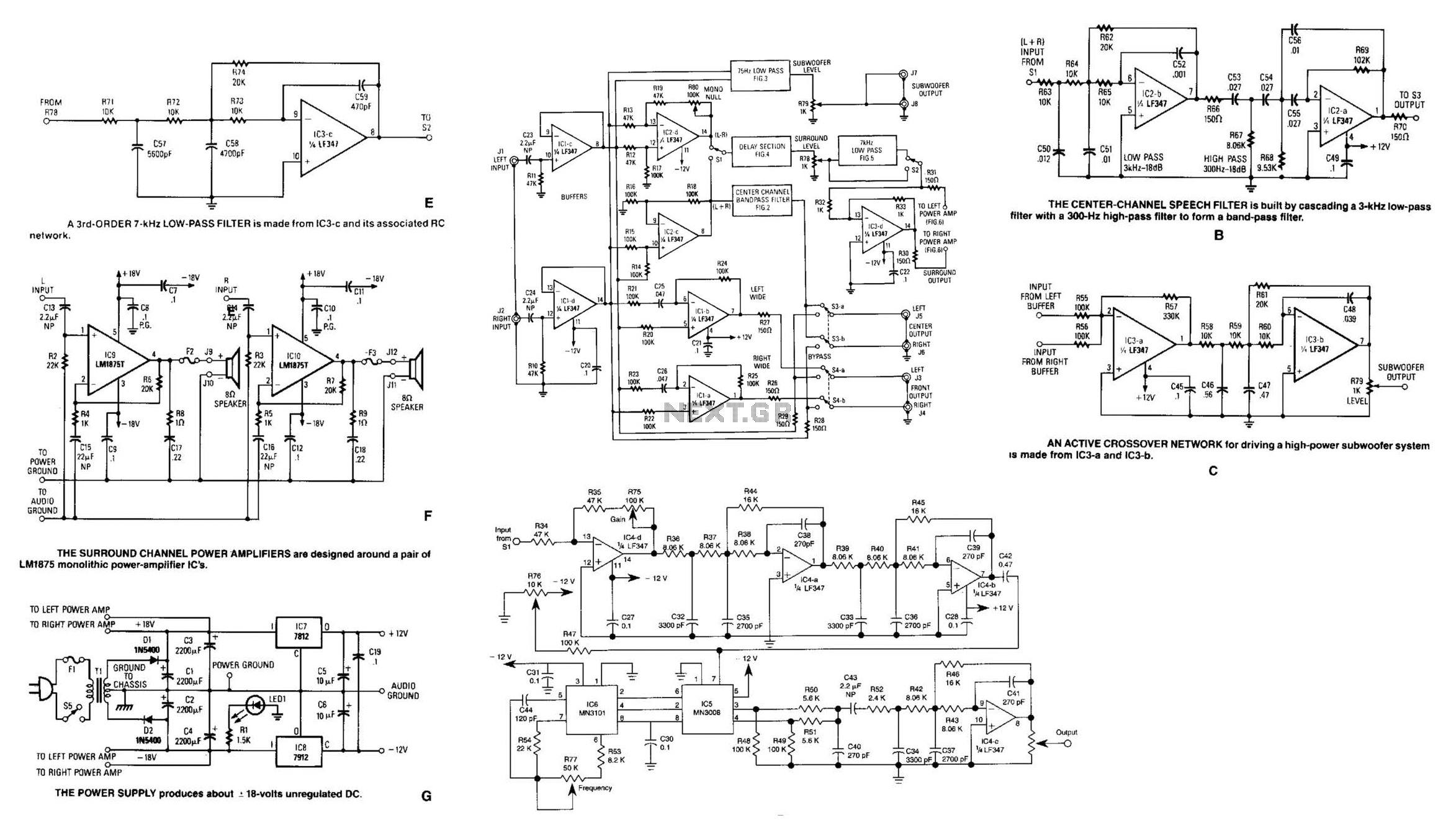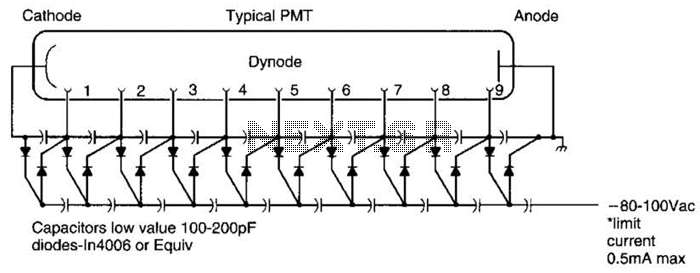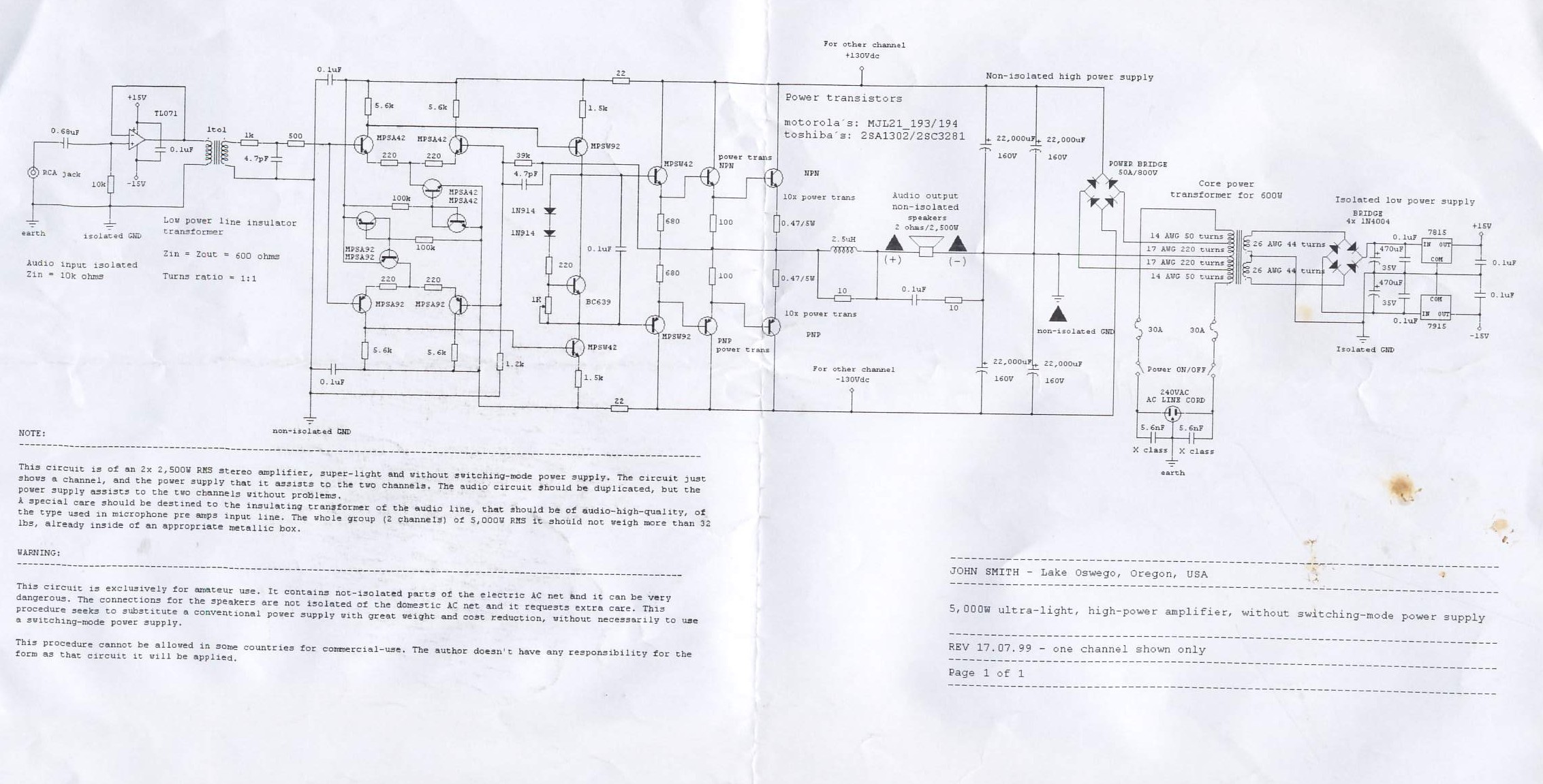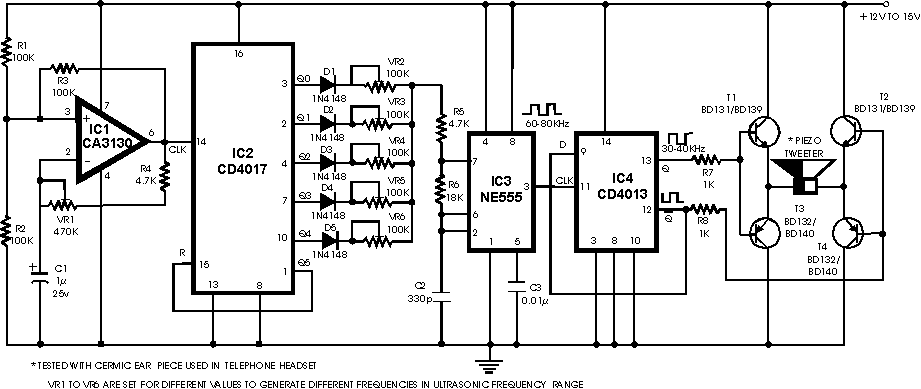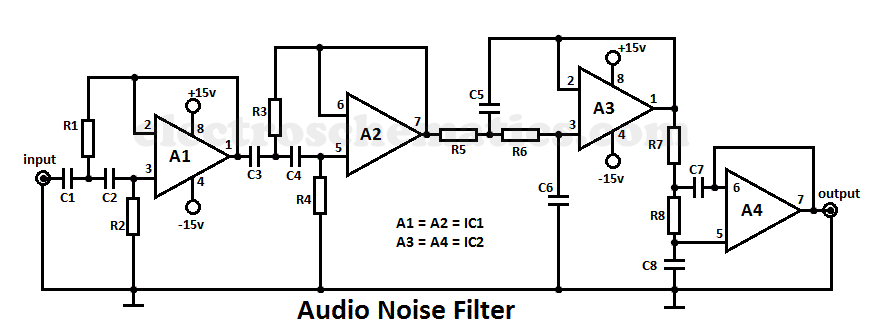
Photo Switch Circuit
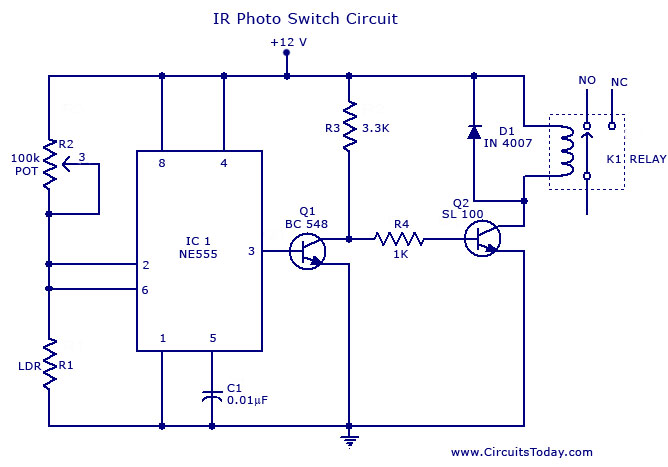
A simple photo switch circuit using the NE555 IC with a diagram and schematic. This photo switch activates a relay when light intensity exceeds a certain threshold. It serves as a light sensor circuit suitable for both home and industrial applications.
The circuit utilizes the NE555 timer IC configured in a comparator mode. The primary function of this circuit is to detect changes in ambient light levels and control a relay accordingly. The NE555 is a versatile integrated circuit capable of operating in various modes, and in this configuration, it serves as a light-dependent switch.
The circuit includes a light-dependent resistor (LDR), which changes its resistance based on the light intensity. When the light level falls below a predetermined threshold, the resistance of the LDR increases, causing the voltage at the non-inverting input of the NE555 to rise. This change in voltage triggers the output of the NE555, which activates the relay.
The relay acts as a switch that can control higher power devices, making the circuit practical for applications such as automatic lighting systems, security systems, or industrial automation. Additional components may include resistors to set the threshold levels, a potentiometer for fine-tuning sensitivity, and a capacitor to stabilize the circuit.
The schematic diagram typically illustrates the connections of the NE555, LDR, resistors, and relay, providing a clear visual representation of the circuit's functionality. This design is relatively straightforward, making it accessible for hobbyists and professionals alike who are looking to implement light-sensitive switching in their projects.A simple photo switch circuit using NE 555 IC with diagram and schematic.This photo switch ons a relay when light intensity crosses limit.A light sensor circuit for home and industrial purpose.. 🔗 External reference
The circuit utilizes the NE555 timer IC configured in a comparator mode. The primary function of this circuit is to detect changes in ambient light levels and control a relay accordingly. The NE555 is a versatile integrated circuit capable of operating in various modes, and in this configuration, it serves as a light-dependent switch.
The circuit includes a light-dependent resistor (LDR), which changes its resistance based on the light intensity. When the light level falls below a predetermined threshold, the resistance of the LDR increases, causing the voltage at the non-inverting input of the NE555 to rise. This change in voltage triggers the output of the NE555, which activates the relay.
The relay acts as a switch that can control higher power devices, making the circuit practical for applications such as automatic lighting systems, security systems, or industrial automation. Additional components may include resistors to set the threshold levels, a potentiometer for fine-tuning sensitivity, and a capacitor to stabilize the circuit.
The schematic diagram typically illustrates the connections of the NE555, LDR, resistors, and relay, providing a clear visual representation of the circuit's functionality. This design is relatively straightforward, making it accessible for hobbyists and professionals alike who are looking to implement light-sensitive switching in their projects.A simple photo switch circuit using NE 555 IC with diagram and schematic.This photo switch ons a relay when light intensity crosses limit.A light sensor circuit for home and industrial purpose.. 🔗 External reference
